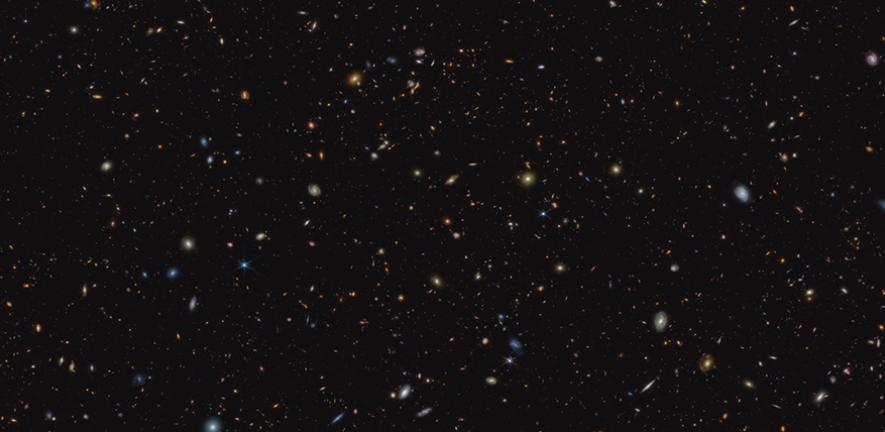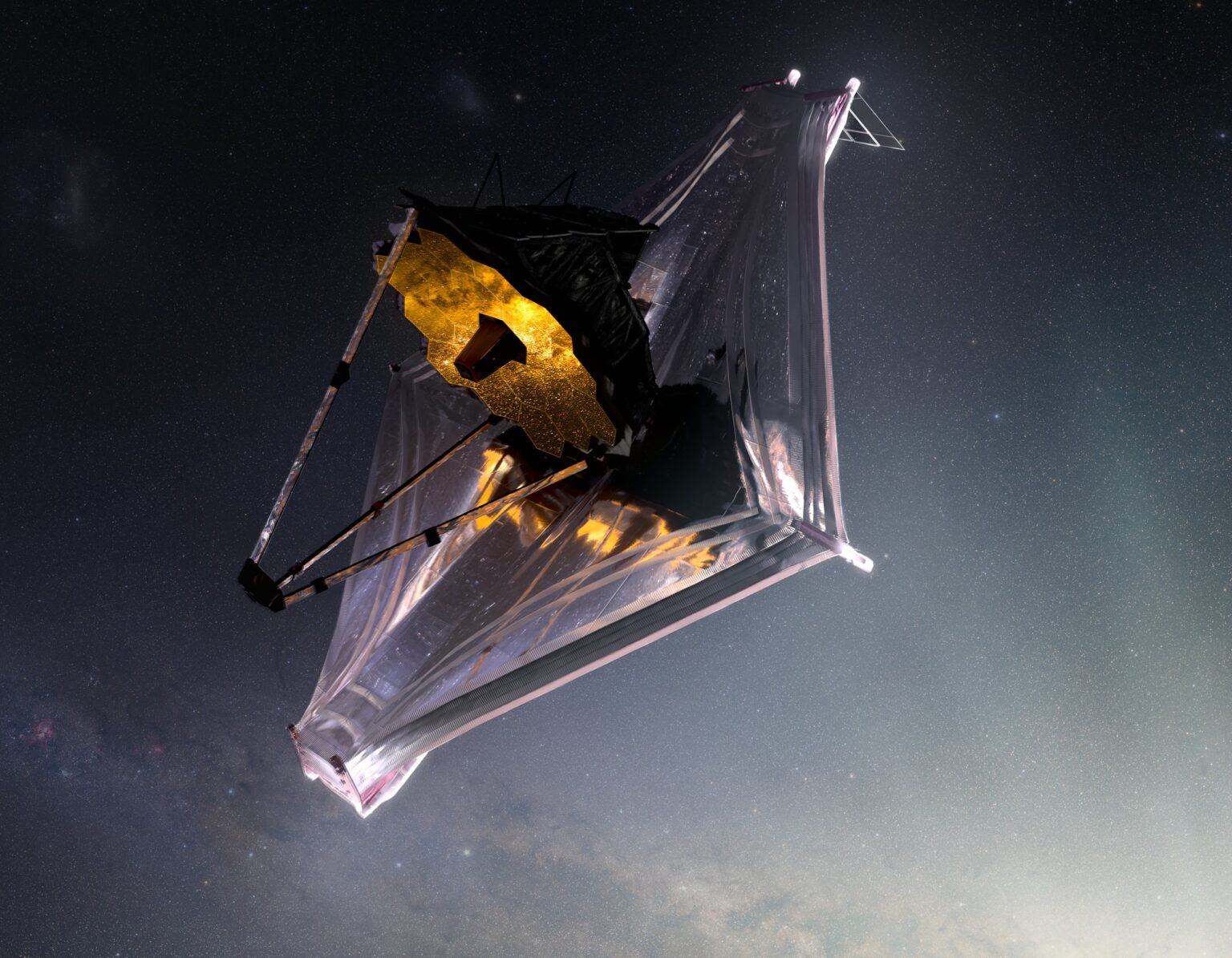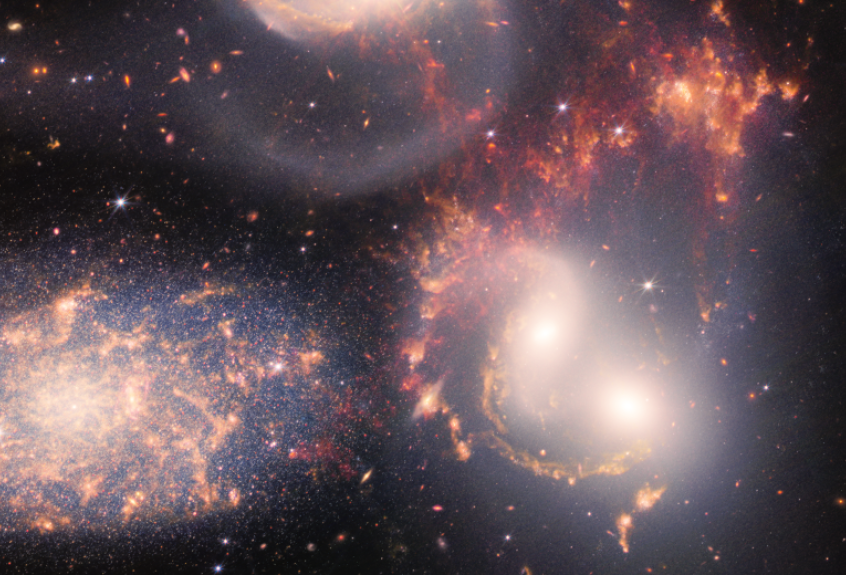Among the most fundamental questions in astronomy is: How did the first stars and galaxies form?
The James Webb Space Telescope (JWST), a partnership between NASA, the European Space Agency and the Canadian Space Agency, already provides new insights into this question.

This infrared image from NASA’s James Webb Space Telescope (JWST) was taken for the JWST Advanced Deep Extragalactic Survey, or JADES, programme. Image credit: NASA, ESA, CSA, Brant Robertson, Ben Johnson, Sandro Tacchella, Marcia Rieke, Daniel Eisenstein
One of the largest programmes in Webb’s first year of science is the JWST Advanced Deep Extragalactic Survey, or JADES, which will devote about 32 days of telescope time to uncover and characterise faint, distant galaxies.
While data is still coming in, JADES has already discovered hundreds of galaxies that existed when the universe was less than 600 million years old. The international team, including researchers from the University of Cambridge, also has identified galaxies sparkling with many young, hot stars.
The extragalactic research group at the Cavendish Laboratory co-led by Professor Roberto Maiolino and Dr Sandro Tacchella is playing a leadership role in JADES, which is a partnership between the science team of NIRCam — JWST’s primary imager — and NIRSpec — JWST’s primary spectrograph.
In the autumn of 2022, JADES took deep imaging and spectroscopy in and around the iconic Hubble Ultra Deep Field.

The James Webb Space Telescope observes early galaxies and stars. Image credit: NASA-GSFC/Adriana M. Gutierrez
The JADES imaging is deep, extends further into the infrared, and covers a wider area than any previous imaging with the Hubble Space Telescope. Results based on this data, which have not yet been peer-reviewed, are being reported at the 242nd meeting of the American Astronomical Society in Albuquerque, New Mexico.
“With JADES, we want to answer a lot of questions, like: How did the earliest galaxies assemble themselves? How fast did they form stars? Why do some galaxies stop forming stars?” said Marcia Rieke of the University of Arizona, co-lead of the JADES programme.
For hundreds of millions of years after the big bang, the universe was filled with a gaseous fog. By one billion years after the big bang, the fog had cleared and the universe became transparent, a process known as reionisation.

Image of Stephan’s Quintet (a group of five galaxies) composed from JWST data using the Near-Infrared Camera (NIRCam) and Mid-Infrared Instrument (MIRI). One of the galaxies (NGC7319) in the group is one of the active galaxies studied in this work. Image credit: NASA, ESA, CSA, STScI.
Scientists have debated whether active, supermassive black holes or galaxies full of hot, young stars were the primary cause of reionisation.
As part of the JADES programme, researchers studied these galaxies to look for signatures of star formation – and found them in abundance.
“Almost every single galaxy that we are finding shows these unusually strong emission line signatures indicating intense recent star formation. These early galaxies were very good at creating hot, massive stars,” said Ryan Endsley from the University of Texas at Austin.
These bright, massive stars pumped out ultraviolet light, which transformed surrounding gas from opaque to transparent by ionising the atoms, removing electrons from their nuclei.
Since these early galaxies had such a large population of hot, massive stars, they may have been the main driver of the reionisation process. The later reuniting of the electrons and nuclei produces distinctively strong emission lines.
The team also found evidence that these young galaxies underwent periods of rapid star formation interspersed with quiet periods where fewer stars formed. These fits and starts may have occurred as galaxies captured clumps of the gaseous raw materials needed to form stars.
Alternatively, since massive stars quickly explode, they may have injected energy into the surrounding environment periodically, preventing gas from condensing to form new stars.
Another JADES result released today concerns the structural evolution of galaxies. The team used imaging and spectroscopy data to tackle a key unknown in extragalactic astrophysics, which is how the structural diversity of galaxies we observe today came to be.
The team discovered a galaxy in the infant universe – just 700 million years after the big bang – but with the structure of a far more mature galaxy. The galaxy is 100 times less massive than the Milky Way, but it is highly compact. Most of the young stars of this galaxy are in the outskirts, indicating that this galaxy is growing from the inside out.
“I was surprised to find such a compact galaxy this early in the universe,” said Tacchella, from Cambridge’s Cavendish Laboratory and Kavli Institute for Cosmology. “I’m excited that the telescope works so well, allowing us to do such detailed measurements of galaxies that are so distant.”
Another element of the JADES programme involves the search for the earliest galaxies that existed when the universe was less than 400 million years old. By studying these galaxies, astronomers can explore how star formation in the early years after the big bang was different from what is seen in current times.
The light from faraway galaxies is stretched to longer wavelengths and redder colours by the expansion of the universe – a phenomenon called redshift. By measuring a galaxy’s redshift, astronomers can learn how far away it is and, therefore, when it existed in the early universe.
Before Webb, there were only a few dozen galaxies observed above a redshift of 8, when the universe was younger than 650 million years old, but JADES has now uncovered nearly a thousand of these extremely distant galaxies.
The gold standard for determining redshift involves looking at a galaxy’s spectrum, which measures its brightness at closely spaced wavelengths.
But a good approximation can be determined by taking photos of a galaxy using filters that each cover a narrow band of colours to get a handful of brightness measurements. In this way, researchers can determine estimates for the distances of many thousands of galaxies at once.
Kevin Hainline of the University of Arizona in Tucson and his colleagues used Webb’s NIRCam (Near-Infrared Camera) instrument to obtain these measurements, called photometric redshifts, and identified more than 700 candidate galaxies that existed when the universe was between 370 million and 650 million years old.
The sheer number of these galaxies was far beyond predictions from observations made before Webb’s launch. The observatory’s resolution and sensitivity are allowing astronomers to get a better view of these distant galaxies than ever before.
“Previously, the earliest galaxies we could see just looked like little smudges. And yet those smudges represent millions or even billions of stars at the beginning of the universe,” said Hainline.
“Now, we can see that some of them are actually extended objects with visible structure. We can see groupings of stars being born only a few hundred million years after the beginning of time.”
“We’re finding star formation in the early universe is much more complicated than we thought,” said Rieke.
Source: Cambridge University

